Yarrow, the bitter, aromatic wild herb mostly thought of as a medicinal plant, is something I prefer to use in cooking in small amounts. A little goes a long way, but it can be a nice accent to certain dishes. Read on and I'll explain the details.
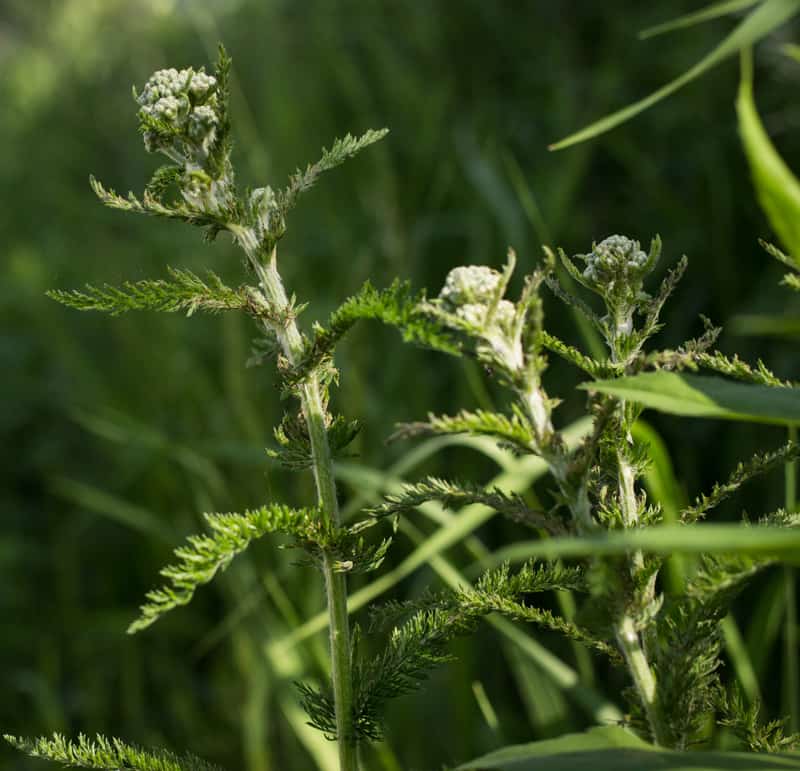
When I smelled yarrow for the first time, I knew I was onto something. Its scent is sweet, and potent.
Since then I've seen a couple different chefs use it, mostly just garnishing dishes with it's leaves. But yarrow is so much more. It's an ancient herb. The Greeks were known to use it as a medicinal since it promotes blood clotting, from there it became associated with war, and soldiers would carry it with them, just in case, or so I've read. Unlike wild mints and other plants from the Lamiaceae, yarrow is bitter. Really bitter. Just a leaf or two is all you need.
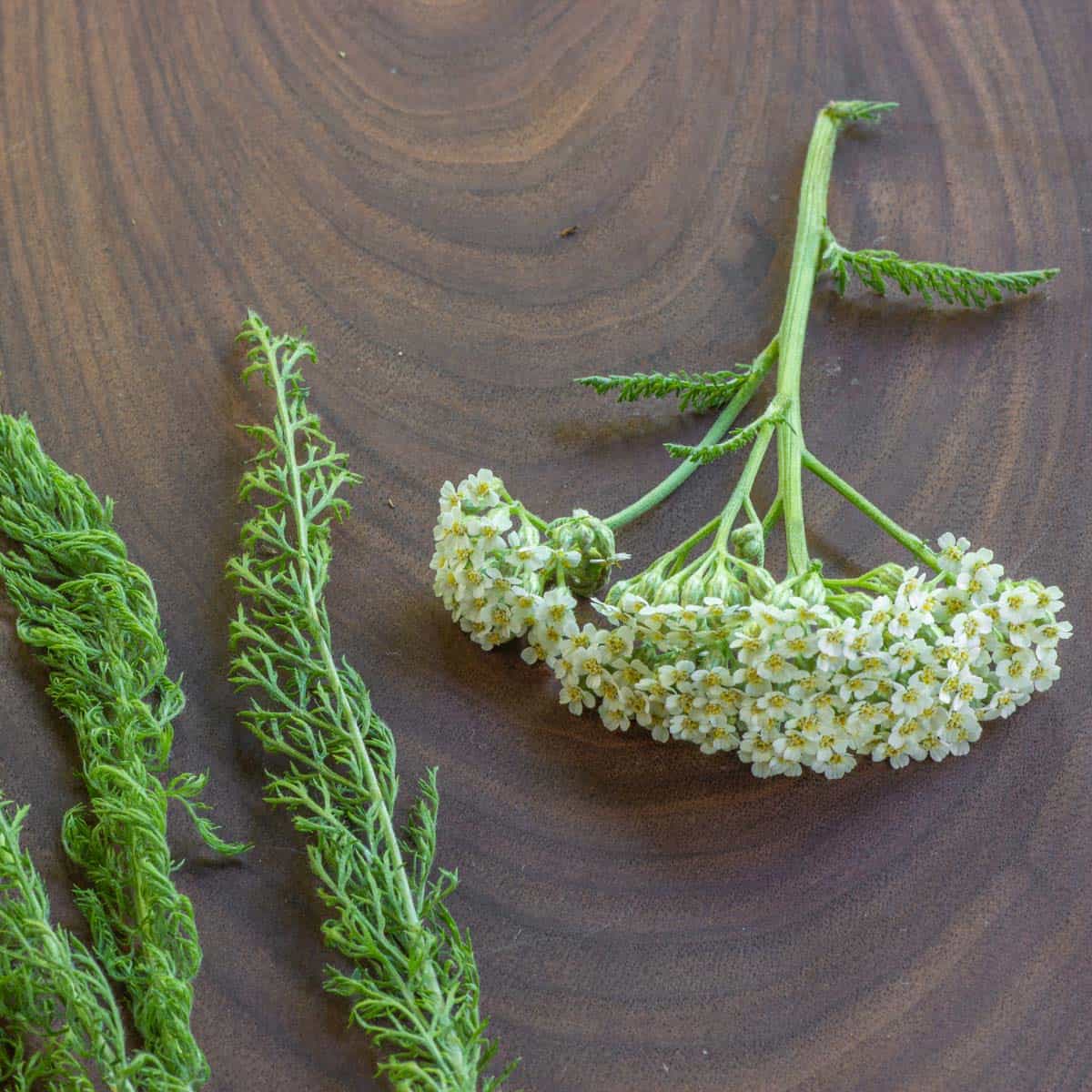
When I first started playing with it in the kitchen, I would take the whole plant, stem, flowers and all, and put it into stock or broth. The resulting broths took on the flavor, but they had an incredibly bitter aftertaste. I adjusted the broths with sugar and vinegar, which helped a bit, but for the most part I disregarded it as a novelty, and assumed the aroma couldn't be separated from the bitterness.
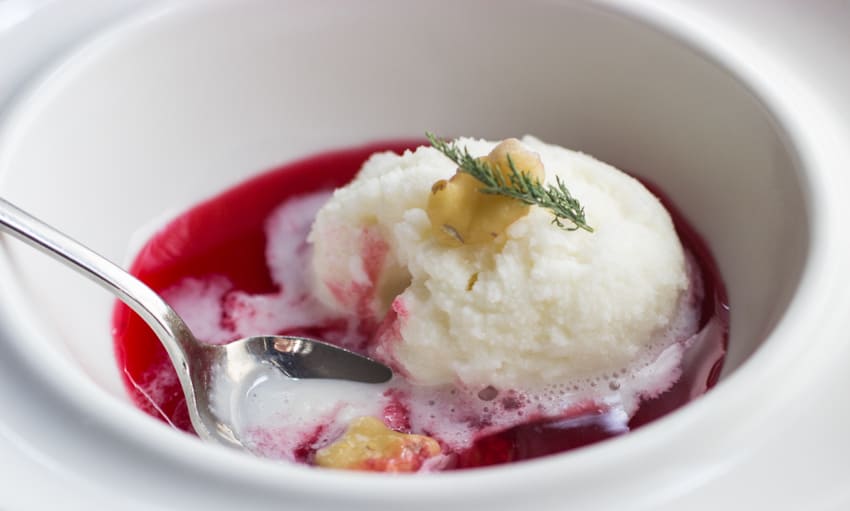
I knew there had to be someway to enjoy this new herb. But how? When I started to see it growing again this year I vowed to unlock it's secrets. I'm still working on that.
At first smell, yarrow comes off as something in between anise and flowers, it's got a very sweet, scent that's hard to describe. I've never tasted anything quite like it. Here's some things I've noticed after using it in the kitchen for a while:
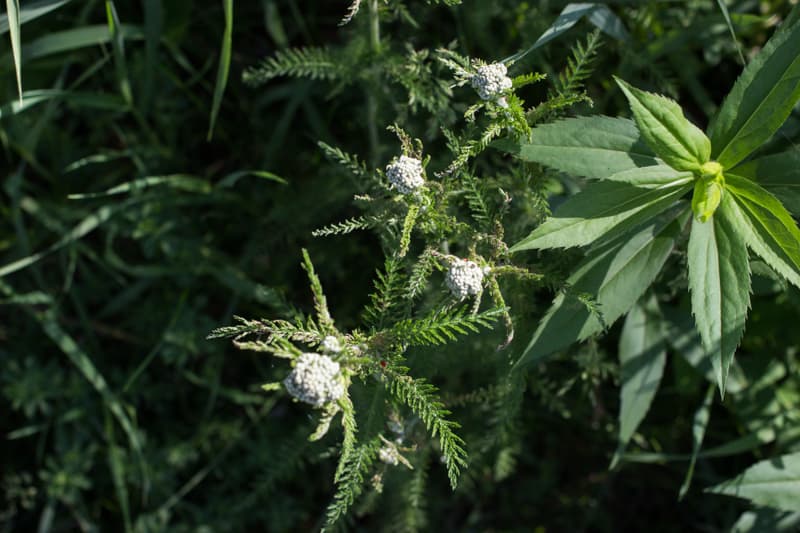
Notes on cooking with yarrow
- It's bitter. It's going to stay bitter, and nothing you do will change that.
- Mixing yarrow with other soft herbs like tarragon, chervil, or parsley is a good way to enjoy it's flavor if you find it a bit powerful for your tastes.
- Just like other soft herbs, high heat will destroy yarrow's flavor. You don't want to really "cook" it. For example, if you wanted to flavor sauteed meat or vegetables with yarrow, add it at the end of cooking just to heat it through for a moment, with the heat turned off like you would chives or parsley. Seasoning something with yarrow and then sauteing will destroy the flavor.
- Yarrow will be nice in desserts since it's naturally sweet, especially those that use cream. I've seen sorbets made from it, as well as ice cream. Small amounts only, remember, it's bitter.
- Putting it in stock or broth is a great way to make bitter stock or broth. Not recommended.
Penne Aglio Olio with Yarrow
Equipment
- 1 Pasta pot
- 1 10 inch saute pan
Ingredients
- 8 oz dried penne finest quality available (look for masciarelli or rustichella pasta, they're by far my favorite, although spendy)
- 4 tablespoon fresh garlic finely chopped
- Kosher salt
- 3 tablespoon extra virgin olive oil
- 3 tablespoon grapeseed or canola oil
- 1 teaspoon crushed red pepper or more depending on how much you like spicy food
- a large handful of yarrow leaves picked from the stem and chopped to yield 2 tsp
- ¼ cup dry white wine
- 4 anchovy filets in oil rinsed and chopped (optional, but I recommend it)
- Parmesan for serving purists would pooh-pooh it
Instructions
- Make a pile of the yarrow and crushed red pepper flakes, then mince them together finely.
- Bring a pot of water to a boil and season it with salt until the water tastes like the sea. Add the penne and cook until al dente, the time of which may vary depending on the brand of pasta you use. High quality Italian dried pasta will take longer to cook than something like Creamette.
- While the pasta is cooking, heat the garlic in the pan with the oils and chopped anchovy on low heat until the garlic is fragrant and lightly browned. Do not allow the garlic to burn. Remove the pan from the heat and swirl it for a minute to cool the pan so that the wine doesn't explode grease all over your face. Add the wine to the pan.
- When the pasta is done, drain and add to the pan. Toss the pasta to coat with the oil and cook for a minute to evaporate any raw wine flavor.
- To finish the dish, add the yarrow-chilli mixture and toss just to heat through. Transfer the pasta to each of 4 bowls, garnish with some parmesan and an extra drizzle of extra virgin oil if desired, then serve immediately with a big green salad.


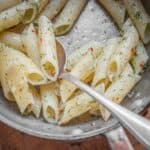
bollywood news
Can't wait to try.
ROC Compliances for an LLP
nice and amazing post thanks for the update
ROC Compliances for an LLP
Scleroderma Therapeutics Market
Thanks for your nice post I really like it and appreciate it.
Krista
My family loves your blog Alan! I just read your yarrow notes as I dried some this year and enjoy it as a tea, and recently discovered I like it as an herb too thanks to my husband. He makes blue masa tortillas and was looking for an herb to put in the dough. He thought my dried yarrow was epazote and crumbled five inches of leaves into the dough. The result was magical! My favorite tortillas ever.
Alan Bergo
Great idea. Thanks Krista.
Facebook Marketing
I'm really inspired along with your writing talents as smartly as with the format on your blog. Is that this a paid subject matter or did you customize it your self? Either way keep up the excellent quality writing, it's uncommon to see a nice blog like this one these days.
Katherina E DiCristina
I would never in a million years call this sweet, anisey, or an even swap with tarragon! Crazy how different people can taste things. I taste pepper. Pepper, spice, and green!
Alexandra Proctor
Hi Alan, Loving your recipe blog - thank-you for sharing all your culinary adventures! I have a secret for you about yarrow... it is the most sublime of all herbs for soup or broth but in a specific way. You DO NOT want the flowering stalks, but the tiny delicate first feather-like leaves which grow from the ground... ideal to harvest regularly from a cluster growing in regularly mowed lawn. The younger the better. These "feathers" are amazing tossed into a perfect broth as an edible green, small and whole. Texture is beautiful, they hold the soup in their fine delicateness and flavour is mild and pleasant. I would never use old growth in broth, like most greens the younger the better for food rather than medicine. I will post a recipe with them this summer cause no one else has one... follow made with love urban farm on facebook if you want to learn more.
Jacqui
For another yarrow idea, I made panna cotta infused with yarrow and it was very nice. I tossed a handful of fresh young leaves (from the autumn new growth) into the hot cream and let is steep overnight. I added a few of the leaves, chopped up, to the finished panna cotta because it is so decorative.
Barb
I occasionally use fresh yarrow leaves stuffed underneath the skin of a chicken, or other poultry, along with a pat or two of butter, then roast. To me, and perhaps it has to do with the type of yarrow and location, it tastes more akin to sage than tarragon. Not only does it give the chicken a wonderful, subtle flavor, it makes for beautiful presentation of the whole chookI I love yarrow but use it with care and sparingly, due to its powerful astringent properties. A note to Shiri--research your meds and the use of yarrow, both culinary use and medicinal, as yarrow is also a wonderful blood coagulator. The University of Maryland Medical Center has a good article about yarrow (as they do with many herbs and foraged edibles).
Love the creativity of your blog!
Shirl
I didn't see any mention of limitations or contraindications for folks who are on a blood thinner. Does anyone know about this? Maybe the bitterness effect would just limit the intake. Thanks ????
Cara
Amazing, thanks for sharing! I was trying to identify the weed growing crazy next to our house and it turned out to be yarrow, it will be great fun experimenting with. -Cara
Hank Shaw
Hey there,
Good to see someone experimenting with yarrow. But your situation is unusual, I think. I've been working with yarrow, off and on, for 20+ years and the herb has *always* been bitter, even when using young shoots from Minnesota in early spring. (I used to live in St Paul) Tolerable, yes, but in no way sweet, as you mention. I find it much closer to rue than tarragon in aroma, too. But maybe that's me.
What I suspect may be happening is that the bitterness does not come out in oil -- maybe it's water soluble? I do like the idea of the oil, however. And I also agree that it dies in heat, so added at the last minute like chervil is best. Mostly I use it in salads in spring, very, very sparingly.
Alan Bergo
Hey Hank! thanks for your thoughts. The key word here is experimenting. We tried making stocks and a brine yesterday and again... they still turned out way to bitter to be palatable for the menu. I can assure you though, that adding a little bit to something at the last minute and exposing it to some heat, (I finished some pheasant confit thighs with it yesterday adding a knob of butter and it was excellent.) will give some fun results. The pasta recipe I posted in here too was one of the more palatable things too, I ate the whole bowl and only got a slight bitterness- much less than something like older dandelion greens.
As far as it's sweetness, it is the aroma that is sweet. It definitely reminds me of the scent of many different "sweet" herbs.
I've also found that crushing the leaves to release their scent, and then marinating fish per gravlax gave a nice perfume (the yarrow was removed after curing.)
For home cooks, I think using it in a blend with parsley and tarragon is probably the best option, as well as using it very, very sparingly, and not adding it to broth, or soup. I made a couple adjustments in the post here to reflect that. Cheers.
Caspar
I agree that it can be bitter (it was used in beer before hops, apparently) but also has a sweet aroma. A couple of fresh yarrow leaves in boiling water is one of my favourite summer drinks.
But in view of the bitternesd, I started wondering how it would be grilled with strong flavoured fish. I tried barbecuing a few leaves just now - tasted like a perfect match for fresh grilled mackrel. I'll try it tonight if we catch any.
Alan Bergo
Good Idea!
Hilda
I am going to keep an eye out for this - I'm pretty sure it grows in E. Ontario. Thanks for some great ideas on how to use it.
Alan Bergo
HI Hilda. If you found anything of value here, thats great! This is a forageable that gets little to no attention, except in super duper upscale restaurants. Enjoy. Let me know if you find out some other ways you like to use it.